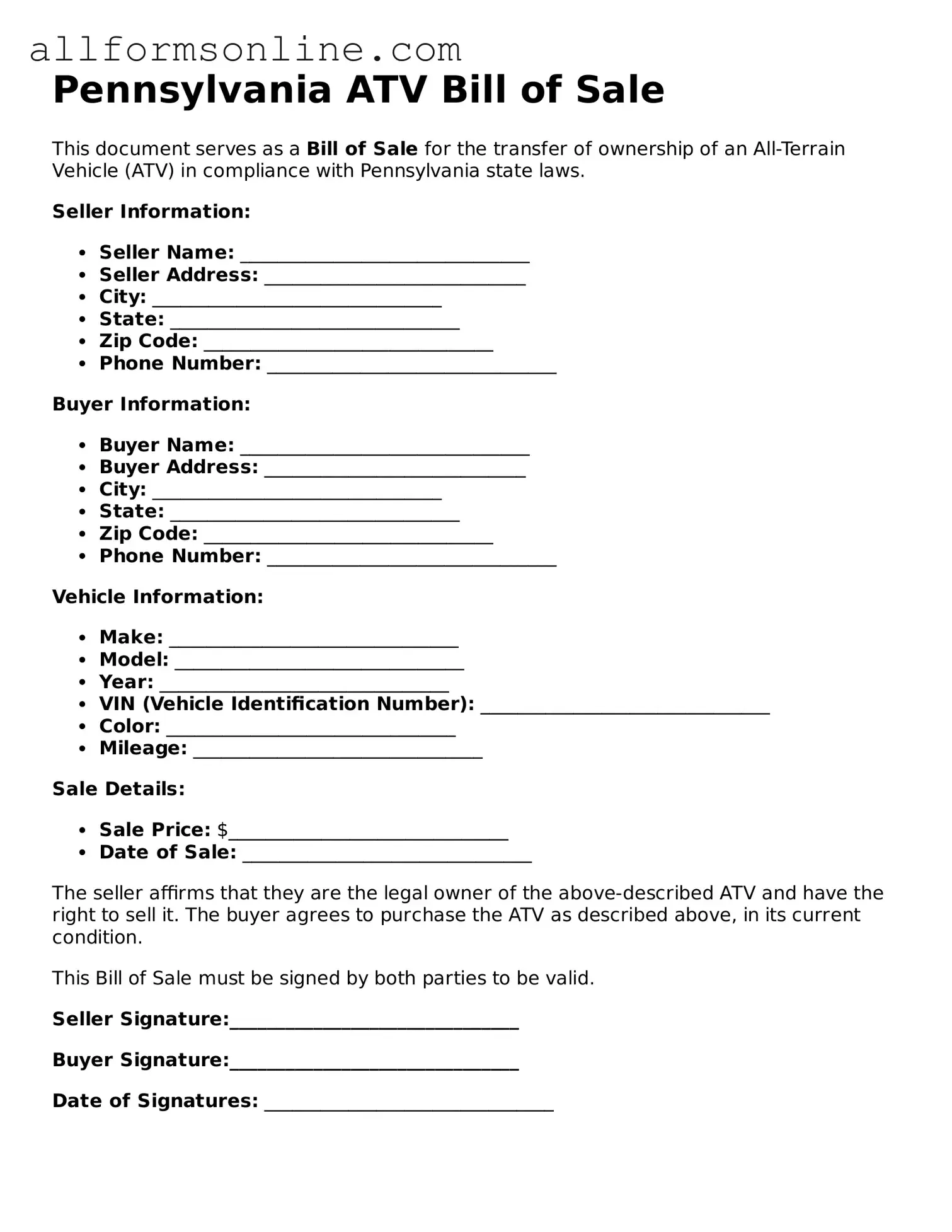What is a Pennsylvania ATV Bill of Sale?
A Pennsylvania ATV Bill of Sale is a legal document that records the sale of an all-terrain vehicle (ATV) between a seller and a buyer. This document serves as proof of the transaction and includes important details about the vehicle and the parties involved. It is essential for ensuring a smooth transfer of ownership.
Why do I need a Bill of Sale for my ATV?
A Bill of Sale is crucial for several reasons. It provides legal protection for both the buyer and the seller. For the buyer, it serves as proof of ownership, which is necessary for registration and insurance purposes. For the seller, it acts as evidence that the vehicle was sold and can protect against future liability related to the ATV.
What information is included in the ATV Bill of Sale?
The ATV Bill of Sale typically includes the names and addresses of both the seller and the buyer, the date of the sale, a description of the ATV (including make, model, year, and Vehicle Identification Number), the sale price, and any conditions of the sale. Both parties should sign the document to validate it.
Is the Bill of Sale required to register my ATV in Pennsylvania?
Yes, when registering an ATV in Pennsylvania, the Bill of Sale is often required. It provides proof of purchase and is necessary for the Pennsylvania Department of Transportation to process the registration. Having this document ready will help facilitate a smoother registration process.
Can I create my own Bill of Sale for an ATV?
Yes, you can create your own Bill of Sale for an ATV. However, it is important to ensure that it includes all the necessary information and complies with Pennsylvania state laws. Using a template or a form specifically designed for ATV sales can help ensure that you cover all required details.
Do I need to have the Bill of Sale notarized?
In Pennsylvania, notarization is not typically required for an ATV Bill of Sale. However, having the document notarized can add an extra layer of security and authenticity, which may be beneficial if any disputes arise in the future.
What if the seller does not provide a Bill of Sale?
If the seller does not provide a Bill of Sale, it is advisable to request one. Without this document, the buyer may face challenges in proving ownership or registering the ATV. If the seller refuses, the buyer should consider whether to proceed with the purchase or seek a different seller who can provide the necessary documentation.
How long should I keep the Bill of Sale?
It is recommended to keep the Bill of Sale for as long as you own the ATV. This document serves as proof of ownership and may be needed for future transactions, such as selling the ATV again or dealing with insurance claims. Storing it in a safe place is wise.
What should I do if I lose my Bill of Sale?
If you lose your Bill of Sale, you can attempt to obtain a copy from the seller if possible. If that is not feasible, you may need to create a new Bill of Sale that reflects the original transaction. It is important to document the circumstances surrounding the loss to protect yourself in case of future disputes.
Are there any fees associated with the Bill of Sale?
Generally, there are no fees specifically associated with creating a Bill of Sale. However, there may be fees related to registering the ATV with the state or transferring the title. It is advisable to check with the Pennsylvania Department of Transportation for any applicable fees during the registration process.
